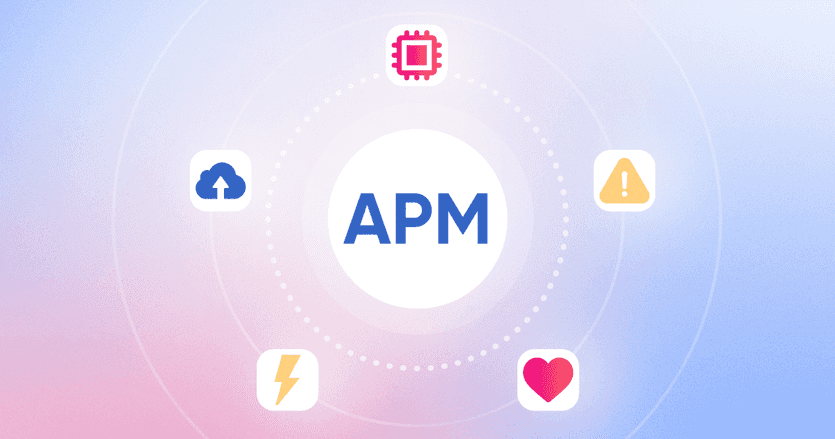Today, there exist a staggering 8.93 million mobile applications. (RiskIQ) Regrettably, a whopping 99.5% of consumer apps ultimately meet with failure. While overcoming the hurdles of enticing users to install your app is no small feat, the greatest challenge to its success lies in convincing users to maintain their engagement. Eye-opening statistics reveal that a quarter of users abandon an app after just one initial use.
What is APM?
Application performance monitoring (APM) is the collection and analysis of data to ensure that applications meet performance and reliability expectations, and provide a positive user experience.
APM can help developers to identify and fix performance problems, track application performance over time, and improve the scalability and security of their applications. For marketing managers, APM can help to track campaign performance, identify areas for improvement, and improve the customer experience. Simply put: APM aims to find and fix app problems before they slow things down at work.
Why is APM Necessary for App Business?
To understand the need for APM, let's consider a simple scenario.
Which is preferable: spotting and fixing software issues immediately without your users even noticing? Or is it better to discover a major bug later, without many smaller ones, but it causes a significant application downtime that impacts your brand's reputation? If an enterprise workload performs poorly, experiences frequent software or infrastructure problems, or causes availability issues, it results in troubleshooting and remediation costs.
If you prefer the first option, you're reading this article for a good reason. Application Performance Monitoring (APM) aids in quickly identifying and addressing issues.
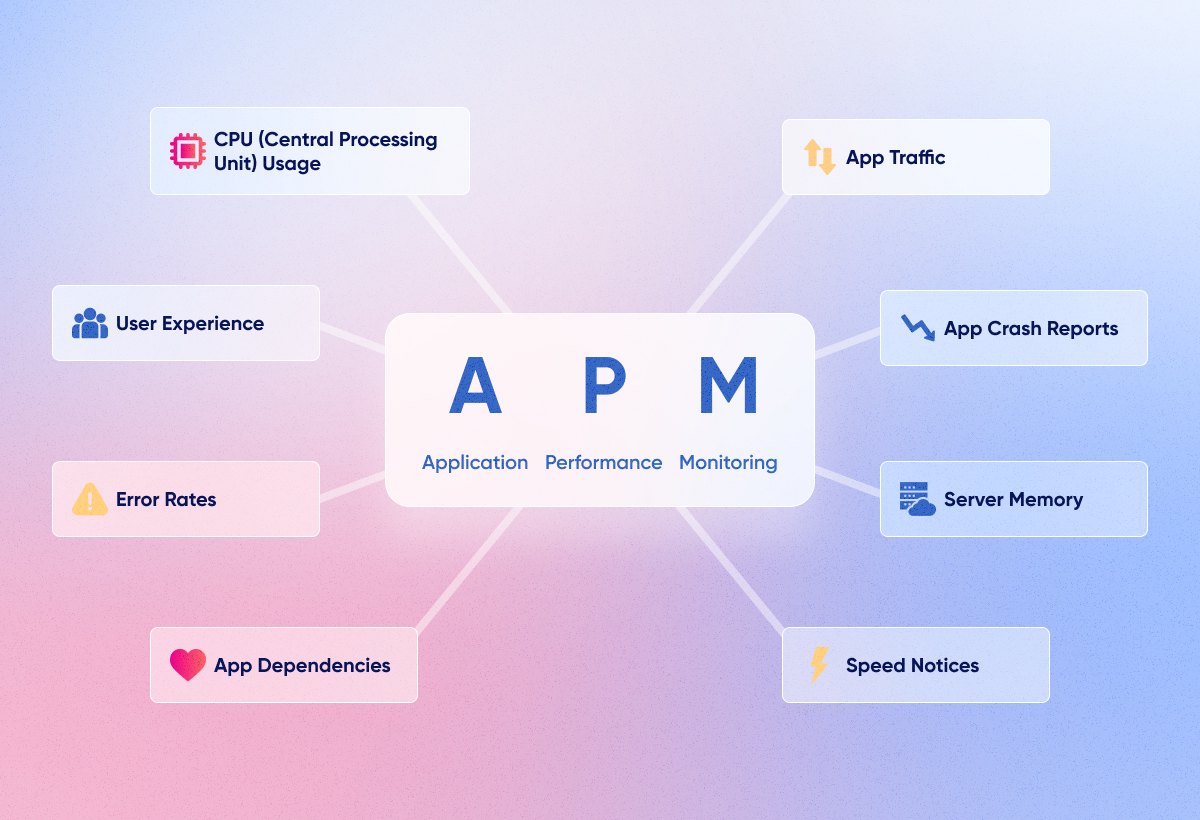
What are the Functions of APM?
APM serves several important functions in the field of IT and software management:
- Issue Detection
APM identifies performance issues, bottlenecks, and anomalies in real-time. It alerts IT teams when deviations from normal behavior occur, allowing for rapid issue detection and resolution. Futhermore, APM helps IT teams pinpoint the root causes of performance problems. It provides detailed insights into application behavior, allowing for more effective troubleshooting.
2. Optimization
APM provides data to optimize application performance, whether through code optimization, infrastructure scaling, or other adjustments. By optimizing resource usage and preventing downtime, APM contributes to cost savings and a better return on investment.
3. Service Level Agreement (SLA) Compliance
[SLA](https://www.coursera.org/articles/sla#:~:text=What is an SLA%3F,metrics to measure the performance.) stands for service level agreement. It refers to a document that outlines a commitment between a service provider and a client, including details of the service, the standards the provider must adhere to, and the metrics to measure the performance. APM helps organizations meet SLAs by monitoring and ensuring the agreed-upon performance standards are met.
4. Data-Driven Decision Making
APM generates valuable performance data that informs decision-making processes, helping organizations prioritize improvements and allocate resources effectively. APM continuously monitors the performance of applications and their components. It tracks metrics such as response times, error rates, and resource usage to ensure optimal performance.
APM also saves you time by taking on important responsibilities. The image below illustrates what you can entrust to APM.

What Advantages Does APM Offer?
By harnessing the power of advanced application monitoring, businesses can realize a host of benefits that span across diverse areas:
- Enhanced Developer Productivity
With streamlined issue detection and resolution, application monitoring empowers developers to work more efficiently, focusing their efforts on innovation and feature development rather than firefighting.
2. Reduced Operational and Compute Costs
By proactively identifying and addressing issues, businesses can minimize operational expenses and optimize resource allocation, ensuring cost-efficiency.
3. Better User Satisfaction and Experience
Application monitoring leads to better user satisfaction and experiences, as it helps prevent outages and slowdowns, fostering loyalty and engagement.
4. Reduced Customer Churn
Happy customers are more likely to make purchases, driving increased sales and revenue. Moreover, by minimizing customer churn, businesses can maintain a stable and growing customer base.
In essence, a comprehensive application monitoring strategy contributes to improved developer productivity, reduced operational costs, enhanced user satisfaction, and, ultimately, higher sales and revenue figures.
What Is The Difference Between Performance Management and Performance Monitoring?
To discern the disparity between performance monitoring and performance management, one must contemplate several key aspects:
- Performance Monitoring: At its core, performance monitoring involves the identification of relevant Key Performance Indicators (KPIs) and their representation on a performance management instrument, such as a dashboard or scorecard. This process entails the systematic collection and centralization of data over defined periods, providing a comprehensive view of the company's progress.
- Performance Management: The transition from performance monitoring to performance management transpires when performance levels fall short of expectations. In this phase, responsible individuals, whether managers or directors, embark on the pivotal task of identifying underperforming components—people and processes—and steering them towards the path of improvement.
- Decision Management: The pivotal bridge between these two concepts is decision management. Once individuals and processes that require fortification are identified, decisions regarding the next steps become paramount. The right actions can drive the company toward progress, while a lack of proper solutions can hinder improvement.
In essence, the fundamental distinction lies in their application within the strategic framework. Performance monitoring primarily deals with the formulation of strategy, pinpointing the targets a company aspires to achieve. In contrast, performance management is intricately tied to the execution of that strategy, translating objectives into realistic targets for employees and guiding day-to-day activities toward the realization of strategic goals.
What Should Every Application Perfomance Monitoring Have?
When it comes to effective APM, there are certain indispensable features and metrics that should be in place to ensure a holistic understanding of your application's performance.
- Error Rates: Keeping an eye on error rates helps identify issues and anomalies within the application. A spike in error rates may signal the need for immediate attention.
- CPU Usage: Monitoring CPU usage is crucial as it provides insights into the system's resource utilization. High CPU usage may indicate performance bottlenecks.
- Garbage Collection (GC): For applications with memory management, monitoring GC events is vital for optimizing memory usage and preventing memory-related performance issues.
- Mean-Time-to-Resolution (MTTR): Tracking response times is essential for assessing how quickly an application can resolve issues and deliver results to users.
- Application Availability: Ensuring that the application remains available is paramount for user satisfaction. Any dips in availability can lead to downtime and negatively impact business operations.
- User Experience: Monitoring user interactions and feedback, as well as tracking how they experience the application, provides a comprehensive view of overall satisfaction.
Why APM Poses Challenges for Cloud-Native Applications
The landscape of applications has evolved significantly in recent years, primarily due to the proliferation of cloud-native computing. This paradigm shift is characterized by loosely interconnected systems, service-based applications, and modular architectures, resulting in a vastly different application environment compared to a decade ago.
Cloud-native applications, characterized by their multitude of microservices, dynamically spinning up and down in the background, produce copious telemetry data. Each microservice, albeit short-lived, contributes its own telemetry data, resulting in increased overall signal noise. This surge in data volume makes pinpointing critical events within your application infrastructure a more arduous task.
Cloud-native applications also produce a diverse range of data types, from telemetry data in serverless environments to data generated by databases and virtual machines (VMs). Effectively normalizing and centrally managing this influx of data becomes a necessity. Compounding the issue is the speed at which this data is generated. In the case of cloud-native applications with numerous smaller microservices, data flows in at a much faster pace compared to monolithic applications. These factors collectively introduce new complexities, making traditional APM practices less straightforward in a cloud-native application environment.
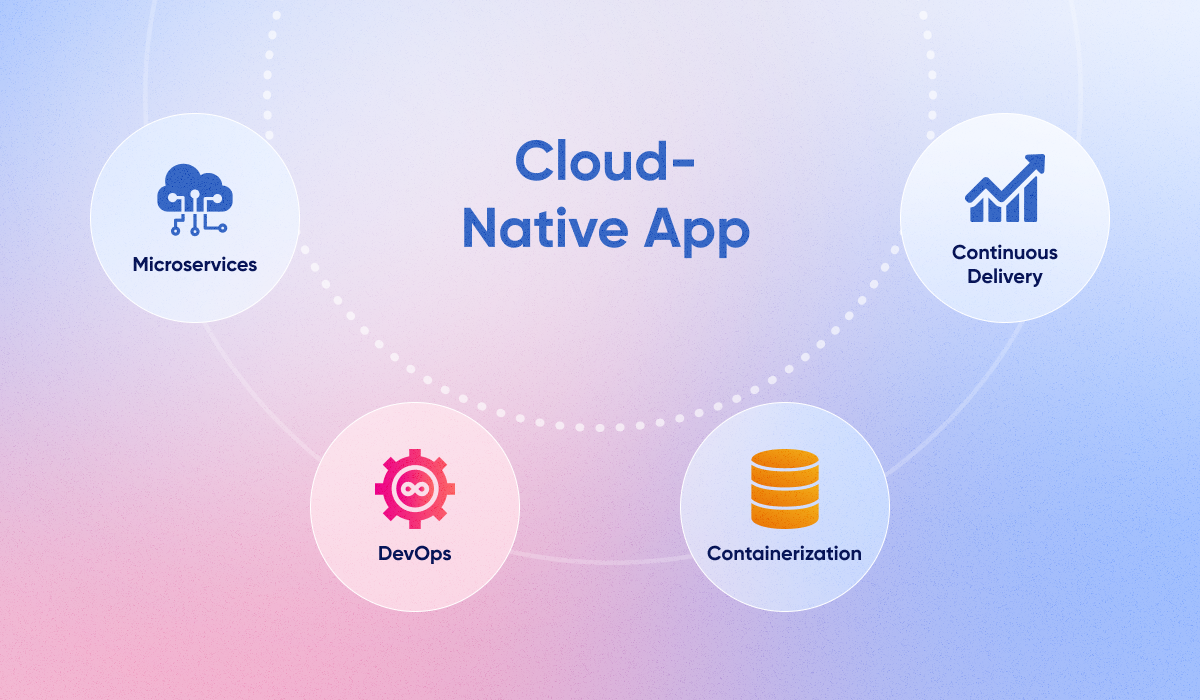
Types of APM
- Synthetic Monitoring
Synthetic monitoring involves simulating user interactions with the application to proactively test its performance and functionality. These scripted transactions provide insights into potential issues before real users are affected.
- IoT Monitoring
IoT monitoring focuses on tracking the performance and behavior of Internet of Things (IoT) devices and applications. It ensures the smooth operation of interconnected devices and the data they generate.
- Real User Monitoring
Real user monitoring observes the experiences of actual users interacting with the application. It provides valuable data on user behavior, response times, and any issues encountered during real-time usage.
- Infrastructure Monitoring
Infrastructure monitoring concentrates on the health and performance of the underlying hardware and software components that support the application. This includes servers, networks, and other infrastructure elements.
- Server Monitoring
Server monitoring hones in on the performance and availability of servers hosting the application. It tracks server resources, response times, and potential bottlenecks.
- Network Monitoring
Network monitoring delves into the performance of the network infrastructure. It helps ensure the efficient and reliable transfer of data between users and the application.
- Database Monitoring
Database monitoring revolves around the performance and health of databases that store critical application data. It ensures that data access and retrieval are efficient and error-free.
- Cloud Monitoring
Cloud monitoring is tailored for applications hosted in cloud environments. It assesses the performance of cloud services, virtual machines, and the application's overall behavior within the cloud ecosystem.
- End-User Monitoring
End-user monitoring focuses on gathering data related to user experience. It measures factors like page load times, responsiveness, and any issues users may encounter while using the application.
Each APM approach serves a distinct purpose, catering to the specific needs and challenges of different aspects of application performance and usage.
Benefits of Advanced APM Tool
Advanced app perfomance monitoring tools offers a holistic view of the entire application stack, encompassing every component, connection point, dependency, and user interaction. This unified perspective empowers various support teams to collaborate effectively, an especially invaluable capability in the intricate, multi-cloud ecosystems that underpin modern applications. For example, advanced APM fosters collaboration across various silos within an organization by leveraging metrics and data. This cooperation streamlines operations and promotes a more agile and responsive business environment. Otherwise, given the complexity of modern applications with their numerous dependencies, APM implementation and management demand a skilled team well-versed in the application, environment, and APM technologies.
So what about pros and cons?
Pros of Advanced APM Tool
- Improved User Experience: A seamless customer (or user) experience is a direct outcome of well-functioning applications and services.
- Enhanced Collaboration: APM fosters collaboration across various silos within an organization by leveraging metrics and data. This cooperation streamlines operations and promotes a more agile and responsive business environment.
- Custom Metrics: Effective APM requires the organization to judiciously choose and monitor meaningful metrics, or even create new ones tailored to the monitored application.
- AI assistance: Certain APM platforms incorporate artificial intelligence, enhancing the capabilities of the entire team and significantly accelerating the organization's capacity to swiftly address application performance challenges.
Cons of Advanced APM Tool
- Technical Proficiency: Given the complexity of modern applications with their numerous dependencies, APM implementation and management demand a skilled team well-versed in the application, environment, and APM technologies.
- Defining Clear Stakeholders and Goals: The objectives of APM are driven by stakeholders. Understanding which aspects of an application should be measured and the rationale behind those choices is crucial. Monitoring for its own sake lacks value for both the business and end-users.
Leading vendors in the APM market
Azure Application Insights
Azure Application Insights, part of Microsoft's Azure ecosystem, is a comprehensive APM solution designed to monitor and optimize the performance of applications hosted on Azure.
Features:
- Real-time application performance monitoring
- End-user experience monitoring
- Application dependency tracking
- Custom metric creation
- Integration with Azure services

Datadog
Datadog is an excellent choice for cloud-native applications, microservices, and modern DevOps environments. It is ideal for applications that span across diverse cloud providers and technologies, offering seamless monitoring for these dynamic ecosystems. It is known for its scalability and broad support for various technologies.
Features:
- Real-time performance tracking
- Distributed tracing
- Synthetic monitoring
- Anomaly detection
- Integration with over 500 integrations

Dynatrace
Dynatrace is an AI-driven APM platform known for its autonomous capabilities. It provides end-to-end visibility into applications, from user experience to underlying infrastructure, helping organizations maintain optimal performance. It is particularly well-suited for large enterprises and complex, mission-critical applications, especially those employing microservices and cloud-native architectures.
Features:
- AI-powered anomaly detection
- Automatic root cause analysis
- Real user monitoring
- Cloud and microservices support
- Integrations with popular DevOps tools
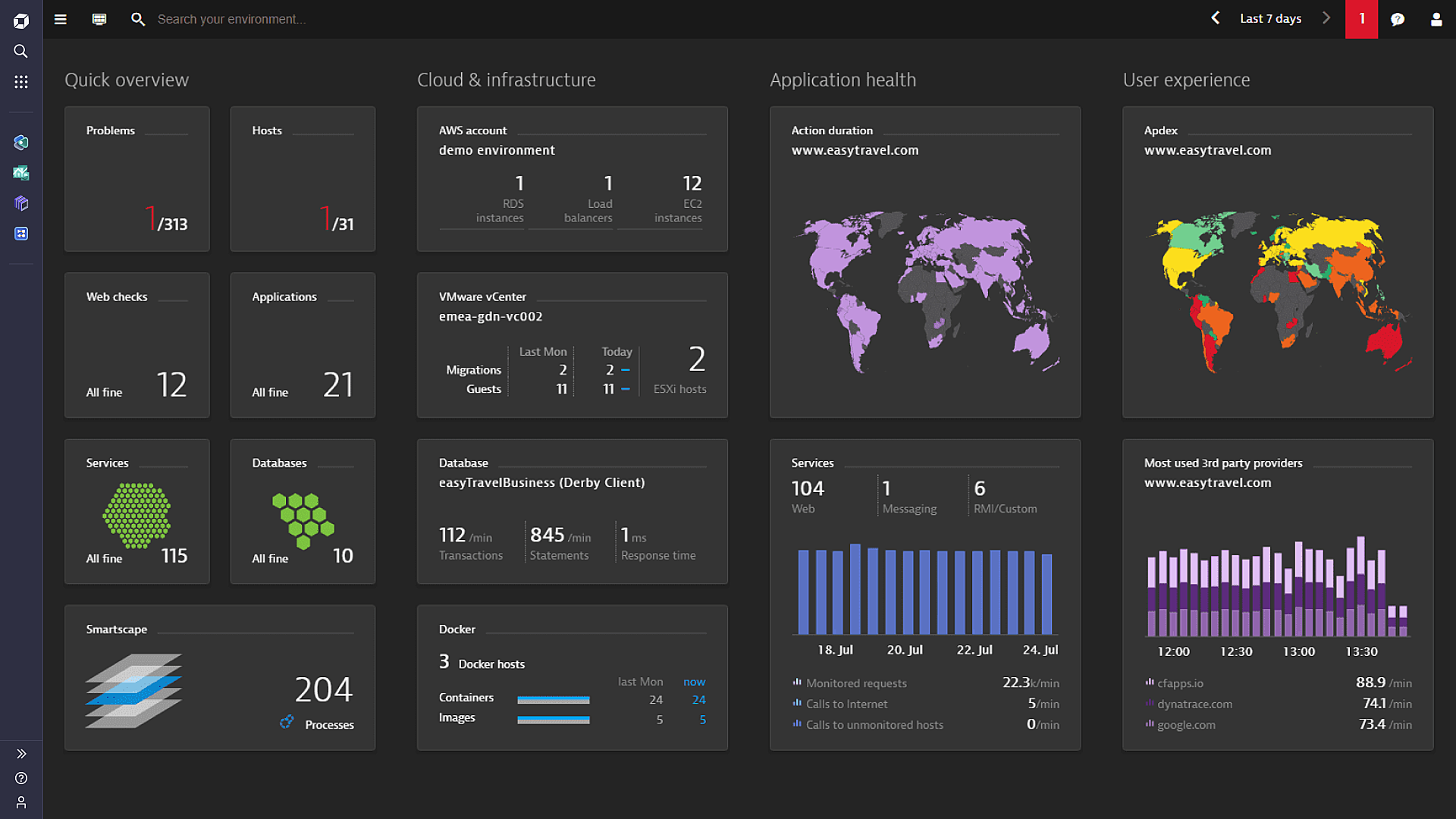
Google Cloud Console
Google Cloud Console offers a set of APM tools and services for applications running on Google Cloud. It focuses on ensuring the performance and reliability of applications within Google's cloud infrastructure. The Google Cloud Console is the perfect choice for applications hosted on Google Cloud. It caters to organizations leveraging Google's cloud infrastructure and is designed to ensure optimal performance and reliability for applications in this environment.
Features:
- Cloud-based application monitoring
- Insights into resource usage
- Cloud-native support
- Integration with Google Cloud services
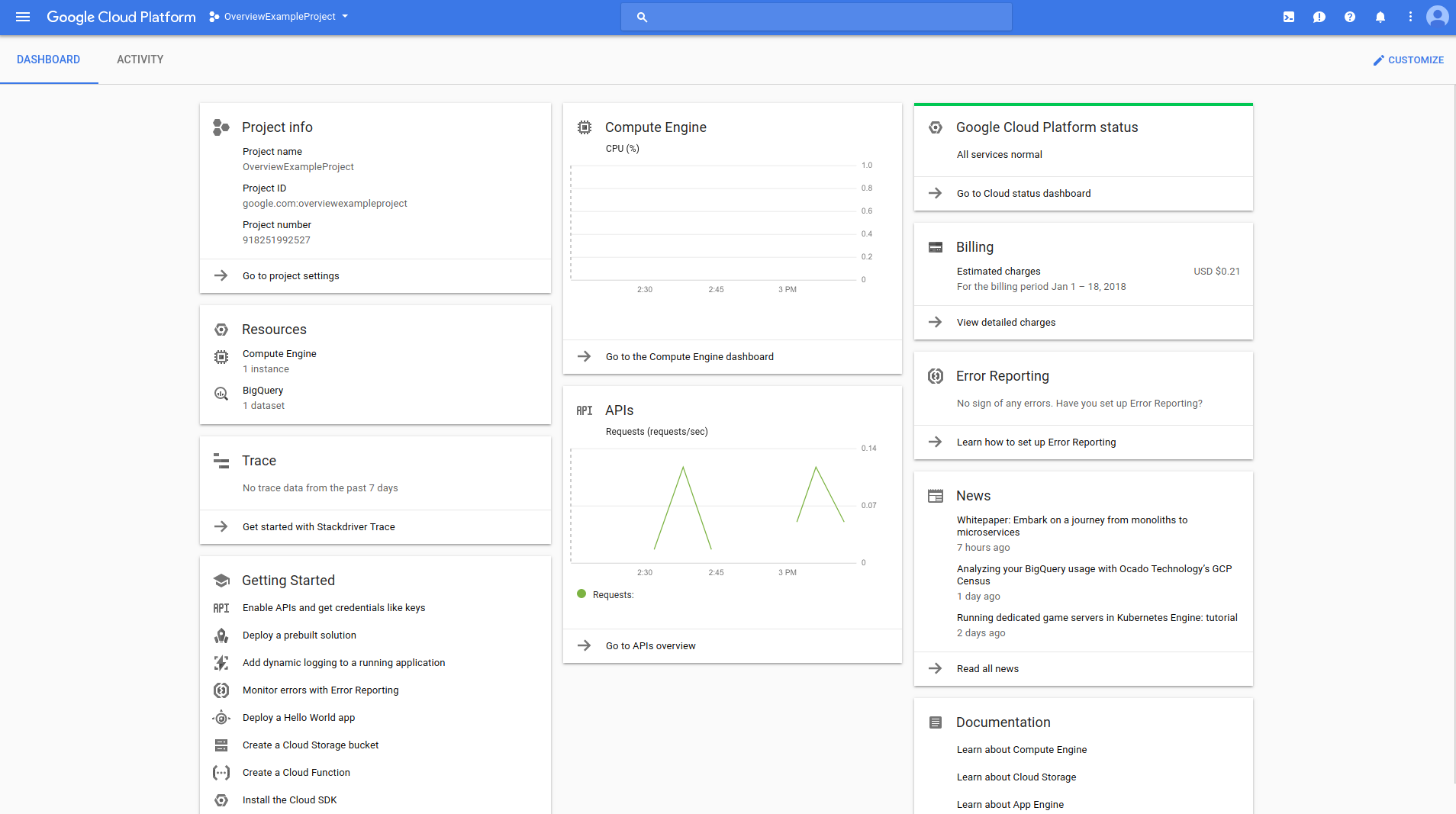
Amazon CloudWatch
Amazon CloudWatch is Amazon Web Services (AWS)'s monitoring and observability service. While it provides more than just APM, it includes features for monitoring application performance within the AWS environment. It's an ideal solution for organizations relying on Amazon's cloud services and seeking in-depth insights into application performance within the AWS ecosystem.
Features:
- Real-time monitoring
- Customizable dashboards
- Log analytics
- Seamless integration with AWS services
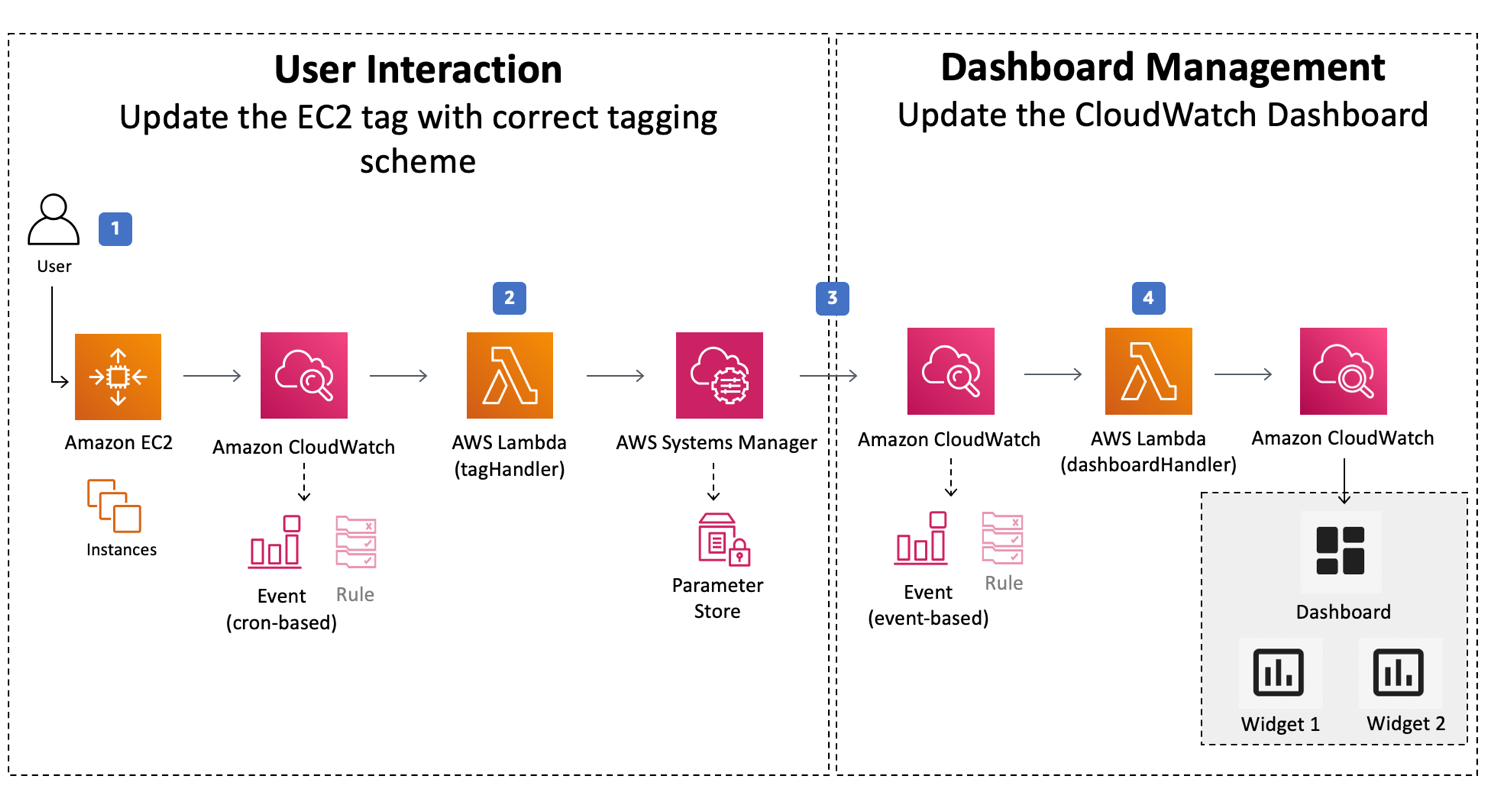
AppDynamics
AppDynamics, now part of Cisco, offers end-to-end visibility into the performance of applications, enabling organizations to optimize user experience and streamline operations. AppDynamics is an excellent fit for organizations with complex and critical applications. It excels in monitoring business transactions and code-level diagnostics, making it ideal for applications where in-depth performance analysis is crucial.
Features:
- Business transaction monitoring
- Code-level diagnostics
- Application analytics
- Machine learning-driven insights
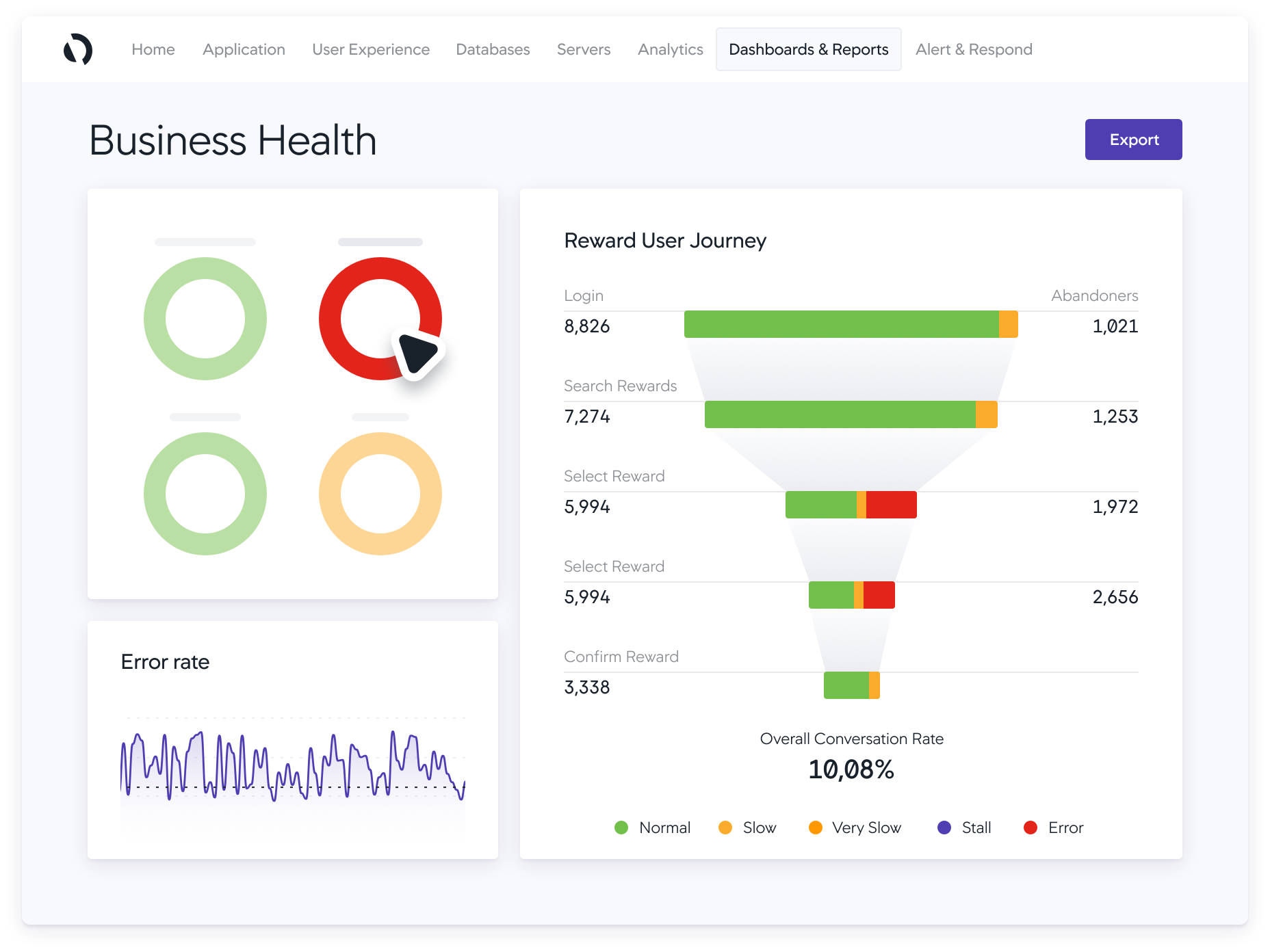
Splunk
Splunk is renowned for its data analytics and log management solutions. In addition to these capabilities, it also provides APM functionalities to help organizations identify and resolve performance issues. Splunk is ideal for applications that require comprehensive log and event data analysis. It's a valuable choice for organizations that need to correlate APM data with other logs and metrics to gain deeper insights into application performance and security.
Features:
- Log and event data analysis
- Real-time monitoring
- Anomaly detection
- Correlation of APM data with other logs and metric

Conclusion
In conclusion, selecting the right APM solution is crucial for organizations aiming to ensure seamless application performance and enhance user experiences. The leading APM vendors mentioned in this article offer a diverse array of features catering to various use cases.
The choice of APM platform depends on the organization's technology stack, scalability requirements, and specific monitoring objectives. With the right APM solution in place, businesses can proactively monitor application performance, detect and resolve issues swiftly, and ultimately deliver exceptional user experiences.
If you're seeking skilled developers to enhance your application, consider Movadex. Our developers boast an average of 5 years of experience, having worked on a wide range of projects, from SaaS to aviation. To explore what our team can offer, please check out our mobile development services. We're here to help you achieve your application development goals effectively and efficiently.

